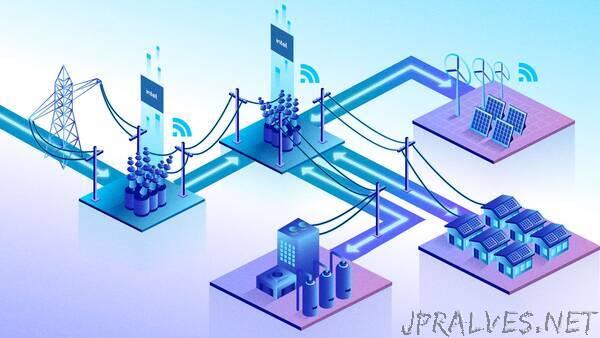
“Ahead of Enlit Europe, Intel announced that its technology is helping power the Edge for Smart Secondary Substations (E4S) Alliance’s new solution to modernize the energy grid. The E4S solution disrupts the existing system, helping it move from a proprietary, closed-hardware architecture to an open, flexible, software-defined energy system. In Europe, there are more than 17 million secondary substations, which enable medium- to low-voltage power conversion. This solution digitalizes the next generation of secondary substations with secure, modular, silicon-enhanced technology and is critical to fully unleashing the power of renewable energy resources.
Intel is convening industry leaders to shift the energy industry through technology. Intel powers the E4S Alliance with hardware, software, security, applications, artificial intelligence (AI) and communication technology solutions. Some of the world’s largest distribution system operators, including Enedis, E-Redes, Iberdrola and UFD (Naturgy Group), represent the customer point of view, for whom these new E4S specifications are built.
Why It Matters: Transition to renewable and clean energy sources is a critical way to reduce greenhouse gas emissions. But energy generated from renewable sources, like solar and wind farms, cannot always be fully deployed on the grid because of its inherent intermittent nature. The E4S power technology at the substation makes the grid more flexible and able to better accommodate more renewable energy sources when available. Implementing the solution at a single substation reduces carbon dioxide by an equivalent of taking as many as 1,800 gasoline-powered cars off the road, based on estimates from the American Council for an Energy-Efficient Economy (ACEEE)1.
Intel has committed to reach 100% renewable electricity in its own operations by 2030. It ended 2022 at 93% renewable electricity globally. The company is also supporting its value chain’s transition to renewable electricity.
How It Works: The E4S secondary substation solution is fueled by Intel® Core™ processors and includes AI and Internet of Things capabilities and networking technology. It allows energy providers to adapt to rapidly changing demands, determine the best energy source, and support more renewable and intermittent clean energy sources at the edge of the grid. It also showcases the future of the network by allowing both real-time execution at the edge and real-time radio and cable communications between utilities and their substations. This can enable easier integration of future applications that deepen analytics through data, like weather predictions, maintenance schedules, or the effects of nature and climate change on transmission equipment.
Another important benefit is that the E4S solution helps make the energy grid more resilient, which is imperative in times of natural disaster. For example, utilities can access different energy sources and integrate them into the grid, regardless of their physical location. It can also allow energy providers to determine power allocation more precisely during emergencies. This means that instead of turning off all energy lines or implementing rolling blackouts, operators can readily adapt to changing energy consumption needs during crises and better keep critical areas and customers powered on.
By moving to a virtualized software platform, the E4S solution supports new digital applications that enable advanced management in operations, remote support capabilities, faster application deployment and upgrades, real-time data analytics, and higher levels of cybersecurity. It can perform those functions without sacrificing safety and reliability. It also decreases capital costs by avoiding waste and distributing energy in the most efficient way possible. And it reduces operating costs by offering insight into each substation and supporting predictive maintenance.
A similar version of grid modernization technology for primary substations – the Virtual Protection, Automation and Control (vPAC) solution – is also being deployed in the United States. It is being developed in collaboration with the vPAC Alliance, a consortium of energy ecosystem partners and utilities, including Southern California Edison, Salt River Project and American Electric Power. One partner’s version of the technology has already been adopted by nearly 100 utilities across the globe. Predictions released from Salt River Project estimate the vPAC solution will save approximately 50% on related capital expenditure and 75% on related operational expenditure once implemented across its grid2.
What’s Next: E4S field trials will be deployed through 2024. Following adoption in Europe, the next target is to have the E4S solution adopted globally. Building off the momentum that began in 2019 with eight companies, these milestones are made possible through the collaboration of the current members of the E4S Alliance: ABB, Ariadna Grid, Barbara, Capgemini, Circutor, Dell Technologies, Enedis, E-REDES, Gridspertise, Iberdrola, Intel, Kalkitech, Labelec, Landis+Gyr, Merytronic, Minsait, Ormazabal, Sagemcom, Schneider Electric, TTTech Industrial, UFD (Grupo Naturgy), VMware and ZIV Automation.”
